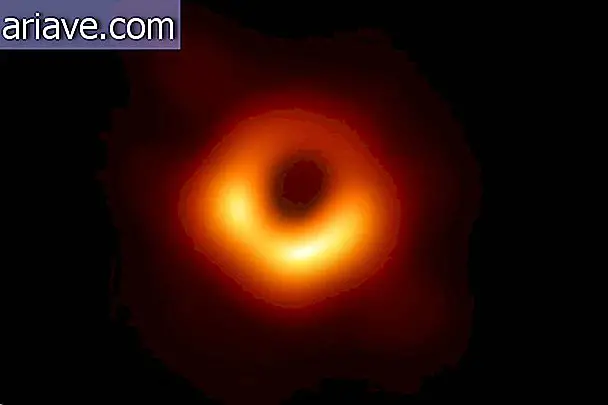Check out some facts and curiosities about the Sun, our Astro-Rei
Our life, and every living thing in the world (and perhaps another planet), depends on the sun. Our king-star provides the light and warmth needed for vegetation to germinate and grow, which gives us oxygen and food source for humans and animals.
It is also sunlight that guides our biological clock, which activates the vitamin D needed for our health, and so many other functions that make life possible for people, animals, plants and microorganisms. Its importance is so immense and essential that throughout human history the sun has been worshiped as the primordial God of many peoples.
Dimensions and intensity
The sun is pure heat and energy on very high scales. It reigns absolute as the largest object of our system. According to data from Space.com, the star holds 99.8% of the mass of the Solar System, which is 332, 900 times that of Earth. To get an idea of its size, if the sun were hollow, it could be filled with 960, 000 Spherical Lands!
When it comes to the fiery cauldron that the sun is, its visible outer part (the photosphere) emanates a heat of between 5, 500 and 6, 000 degrees Celsius, while core temperatures can reach more than 15 million degrees Celsius. value driven by nuclear reactions.
For comparison, it would take 100 billion tons of dynamite per second to match the energy produced by the sun, according to NASA calculations.
In terms of its trajectory, the Sun orbits the center of the Milky Way at a distance of about 24 to 26, 000 light years from the galactic center, completing an orbit of 225 to 250 million years (a galactic year).
Formation

The sun came up about 4.6 billion years ago, being one of the more than 100 billion stars in the Milky Way. According to Space.com, many scientists believe the sun and the rest of the solar system were formed from a rotating cloud of giant gas and dust known as the solar nebula.
As the nebula collapsed because of its gravity, spinning very fast and flattening like a disk, most of the material was pulled toward the center to form the Sun. And so the Astro-King emerged. But how long can he reign?
According to astronomers' calculations, the sun has enough nuclear fuel to remain as it is today for another 5 billion years. After this period, it will expand to become a red giant.
After this phase, it will lose its outer layers and the remaining core will collapse to eventually become a white dwarf - which will gradually disappear into the final black dwarf phase.
Atmosphere and structures
Do you know how the sun and its atmosphere are divided? They are several zones and layers that form the big heat star of our system. Inside it is the nucleus, the radiation zone and the convection zone. The sun's atmosphere is formed by the photosphere, chromosphere, a transition region and the solar crown - also called the white crown or Fraunhoffer's crown.
The solar corona is the illuminated envelope we see when an eclipse occurs, consisting of approximately 2 million degrees Celsius plasma. This high temperature contributes to the formation of solar winds that happens by the emanation of gases from the crown.
Above the nucleus it extends from the center of the sun about a quarter of the way to its surface. Next comes the radiation zone, which extends from the nucleus 70% of the way to the Sun's surface, making up 32% of its volume and 48% of its mass. The core light is scattered in this area.
The convection zone reaches the surface, making up 66% of the Sun's volume, but only a little over 2% of its mass. The turbulent gas "convection cells" dominate this zone, the main ones being granulation (about a thousand kilometers wide) and supergranulation, 30, 000 kilometers in diameter.
Layers

When it comes to the layers of the Sun's atmosphere, the photosphere is the lowest and emits the light we see, about 500 kilometers thick. Temperatures in the photosphere range are 6, 125 ° C at the lowest and about 4, 125 ° C at the top.
Followed by the photosphere is the warmer chromosphere, reaching temperatures of up to 19, 725 degrees Celsius, apparently made up of pointed structures known as spicules, which are about 1, 000 kilometers in diameter and up to 10, 000 kilometers high.
After the chromosphere comes the transition region, a thinner layer about two hundred kilometers thick where the temperature rises rapidly, casting most of its light as ultraviolet rays. And finally, at the top is the crown and the heliosphere, which continually expand into the surrounding space.
In the matter of the magnetic field, it is only twice as strong as Earth's. However, it becomes highly concentrated in small areas and can reach forces up to 3, 000 times higher than usual.
And what exactly is the sun made of? According to astronomers and scientists, like most other stars, the sun is made up mainly of hydrogen, followed by helium. Almost all the rest of the matter consists of seven other elements: oxygen, carbon, neon, nitrogen, magnesium, iron and silicon.
Spots and solar cycles
The sun also has a very striking feature: sunspots. They are darker regions of the surface because they have lower temperatures. Being cooler, their appearance is noticeable, being generally circular.
In these spots there is intense magnetic activity, which reduces the transport of energy from the sun's warmer interior. That is why they become areas with lower temperatures. In addition to the spots, we can not stop talking about solar cycles.
There is an instability in the number of visible sunspots in the sun, as it is not constant, varying over an 11-year cycle called the solar cycle. At its beginning, the cycle has few visible spots, and often none can be seen.
As the solar cycle follows, the number of spots expands, and they move toward what is called the solar equator, generating a phenomenon called Spörer's law. It is important to emphasize that the solar cycle has a great influence on the meteorology of space and also the climate on Earth.
Other facts and curiosities

- The sun will swallow the earth. When all the hydrogen is burned, the sun will continue for about 130 million years to burn helium. During this time, it can expand to the point of swallowing Mercury, Venus and Earth, when it will become a red giant as mentioned above.
- The sun is an almost perfect sphere. There is only a difference of ten kilometers in its polar diameter compared to its equatorial diameter. Considering the vast expanse of the Sun, this means that it is closest to a perfect sphere that has been observed in nature.
- Sunlight takes eight minutes to reach Earth. With an average distance of 150 million kilometers and the speed of light at 300, 000 kilometers per second, dividing each other gives us an approximate time of 500 seconds or eight minutes and 20 seconds.
- The sun travels at 220 kilometers per second. It is between 24, 000 and 26, 000 light years from the galactic center and takes from 225 to 250 million solar years to complete an orbit in the center of the Milky Way.
- The distance from the sun to the earth changes throughout the year. As the earth travels in an elliptical orbit around the sun, the distance between the two bodies ranges from 147 to 152 million kilometers. The distance between the earth and the sun is called the astronomical unit (AU).
- The sun is in its middle age. For about 4.6 billion years, the sun has burned about half of its hydrogen stock. But it still has enough hydrogen to continue to burn for about 5 billion more years, and is currently a type of star known as the yellow dwarf.
* Originally posted 03/03/2015











